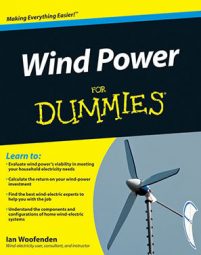Many wind generator inventors, manufacturers, and installers make claims about how much energy you can get from their idea or product, but how can you know whether those energy claims are realistic, ambitious, or outright scams? In all cases, you should seek real-world confirmation of estimates and check your wind power professional's numbers.
To test for "enthusiastic" estimates from inventors, manufacturers, or installers, do the following:
Verify the average wind speed the professional or manufacturer is using as the basis of the claim.
Without an accurate average wind speed from your actual tower height, you can't get an accurate prediction of wind energy on your site.
Verify the swept area (the area that the blades sweep) of the wind generator.
For horizontal-axis machines, the swept area equals the rotor radius (half of the diameter) squared times Pi (3.14 if your calculator doesn't have a Pi button). For vertical-axis wind generators, take height times width for swept area; multiply that total by 0.65 for Darrieus-style vertical-axis turbines.
Multiply the swept area (in square feet) by the average wind speed cubed (in miles per hour), and divide that total by 32,000 for an estimate of average daily kWh production from a typical machine.
Multiply your final total by 30 to get your average monthly energy in kWh and 365 for annual energy in kWh.
Check this prediction against manufacturer claims or installer production estimates.
If the manufacturer or installer claim is 50 percent or more above your estimate, the machine may possibly be very efficient, but you're probably looking at an exaggerated claim.

